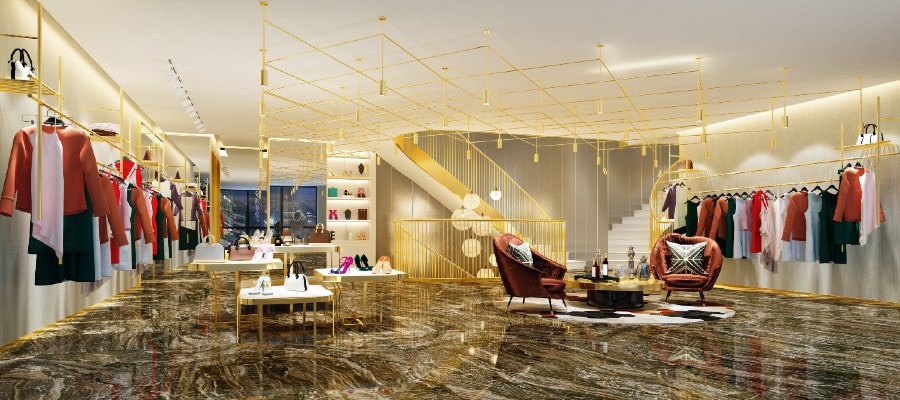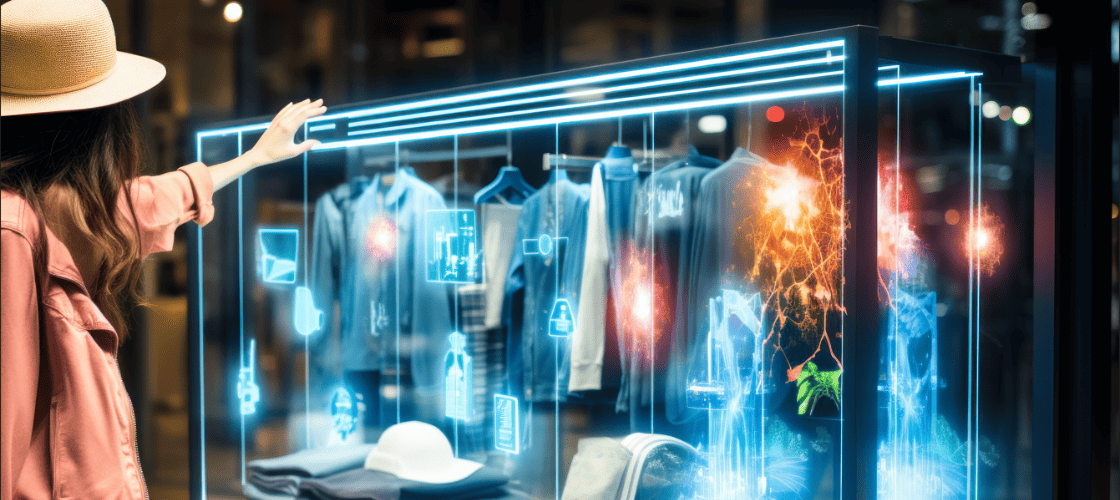Retail & Distribution
From Functional to Fashionable: The continued rise of wearable technology
18 May 2016
The evolution of the retail world has been a whirlwind of innovation. Driven by consumer demand – particularly from the millennial demographic, shopping is becoming an entire experience in itself, regardless of what you choose to purchase. From the moment you set foot inside a store, retailers are doing their utmost to express their creativity, client-focus and appeal through whatever means necessary to ensure that your time spent in there is memorable and enjoyable. Sensploration – appealing to customers through sound, smell, taste and touch as well as sight using developments in technology, is becoming increasingly popular. Other developments such as mobile clienteling, digital displays and sleek, modern and mobile POS systems help to provide customers with a personalized and connected retail experience from start to finish.
However, as technology continues to permeate our lives, retailers have had the challenge of incorporating modern innovations within their products – items which traditionally wouldn’t lend themselves to being used in such a format.
Many early attempts to fuse fashion and technology created a buzz of interest, but failed to be successful. At New York Fashion Week in September 2012, models for the Diane von Furstenberg Fashion Show took to the stage wearing nerdy-looking glasses that featured camera technology attached to the frame. This was the debut of Google Glass, which despite initially being yearned after by gadget-lovers everywhere was soon slated by tech reviewers and became the punch line of Google.
Thankfully later developments in wearable technology were vastly improved and during the last few years we have seen an explosion of contemporary wearable apparel that embraces the absolute cutting edge of electronics and engineering. Just as importantly, these innovations are now more often than not, combined with increasingly aesthetically pleasing and desirable products.
Needless to say, these later designs have taken off in a big way. In 2015, 39.5 million U.S. adults used wearable devices including smartwatches and fitness trackers, which was an increase of more than 57% from 2014. The trend is set to continue on an exponential rise with researchers currently predicting that more than 81.7 million adults will own wearable tech by 2018.
So with technology still rapidly evolving, what wearable technology trends can we see now and what are we likely to see in the future?
Functional wearable tech
We know that consumers are willing to spend on technology because of the functionality and control that it provides them, and as such it should come as no surprise that the majority of current, affordable wearable technology products have their roots steeped in that functionality. After all, a consumer wants as much as possible for their money.
As an increasingly health-conscious society, it is little wonder that Fitbits and other activity trackers are one of the most commonly purchased and popular bits of wearable tech on the market. With the ability to track activity, exercise, food, weight, sleep and more, with a Fitbit it is possible to understand more than ever about our health at the touch of a button.
Wearable tech has also extended to clothing as well as accessories. Ralph Lauren have created a technology-enabled shirt which monitors heart rate, breathing and stress levels, and could prove to be a highly useful tool for all athletes.
Another of the most popular functional wearable technology products on the market is the Smartwatch. Although many consumers believe that the Apple Watch is their only option, there is now a variety of alternatives available. These include designs by LG, Samsung, Asus, Louis Pion, and Microsoft to name just a few. Tag Heuer are owners of the most expensive Android Wear smartwatch on the market, but for the $1,500 price tag you will get a luxurious design with supreme functionality, showing they have nailed how to blend taste and technology.
Studies performed by Gartner, the world’s leading information technology research and advisory company, have led them to predict that the delivery of wearable technology will grow from 100,000 units in 2014 to more than 26 million units being shipped by the end of 2016. This represents a stratospheric rise that screams that wearable technology is here to stay and is a sound investment for retailers for the foreseeable future.
As we go forward to possibilities of functional wearable tech are virtually limitless. Other concepts that we have seen include:
- A Lyle and Scott jacket designed in a collaboration with Barclays which contains a bPay payment chip concealed within the cuff of the jacket, allowing the wearer to discreetly make payments for purchases.
- Beautiful clutch bags designed by Rebecca Minkoff that incorporate Stellé Audio speakers.
- A possible contender for the Fitbit in the ‘Sensoria’ smart sock and anklet from Heapsylon, which detects activity based on pressure signals from the foot.
- Connected luggage featuring flight information, weather forecast for your desired destination, luggage tracking and security, created by Delsey.
- The MICA luxury bracelet which was showcased at New York fashion week and is a 3G bangle that has high fashion appeal with 18k gold detailing and pearls and semi-precious stones. It also has a virtually imperceptible OLED screen that allows you receive notifications even if you leave your phone at home.
Purely aesthetic wearable tech
Not everything related to technology has to be useful, and a growing number of designers are choosing to incorporate it within their garments purely to enhance their aesthetic appeal. For the time being this market may have slight limitations as unless your customers have the financial freedom to be able to spend money on how a product looks alone, you may find less people willing to invest in an item of clothing. However, there are examples already out there.
Fashioningtech.com have featured an interactive maternity red carpet dress which is lined with sensors that can pick up on any movements made by the baby. These movements then trigger the integrated LED lights to glow in response to the movements. The design was created in order to celebrate motherhood and help mum to feel connected with her baby and takes the experience of pregnancy to a whole new level.
Other fashion designers such as Amy Winters, the creator of the ‘Rainbow Winters’ clothing line, have utilized technology to create sensory experiences with their clothes. Winters has a range of garments that react to sound and light by stimulating visual changes on the clothing, such as the appearance of a specific design or color.
There is no end in sight
We can say with certainty that there is a wearable future ahead and one that has the possibility to permeate many aspects of our lives. Retailers will feel the pressure to innovate in line with technological developments in order to have a chance of withstanding the competition to offer the fastest, best value or most impressive solutions to these demands. Personalization and the shopping experience will be what opens the door to consumer hearts, but the opportunities offered by wearable technology may well hold the key.
Contact us today to see how you can deliver a connected retail experience to your customers.


